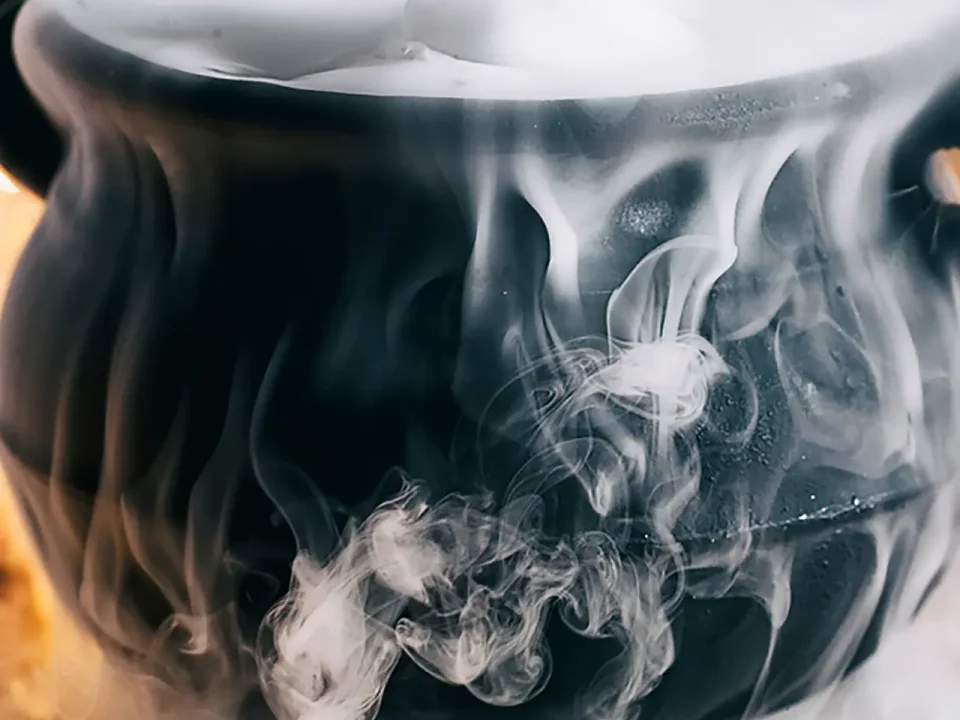Table of contents
- Myth #1 — You can consume dry ice.
- Myth #2 — Dry ice can be handled with bare hands.
- Myth #3 — Dry ice is just another version of traditional “wet” ice.
- Myth #4: Storing dry ice in the freezer makes it last longer.
- Myth #5: Dry ice can be disposed of in the sink or trash.
- Myth #6: Dry ice can only be used for practical uses.
There are many myths when it comes to the mysterious substance that is dry ice. From its practical uses to its safety precautions, we want to share the truth about some of these common misconceptions to help ensure safe, proper handling of dry ice during any experiment or activity.
Ready to bust the myths? Keep reading for some of the most common dry ice misconceptions and get our expert insight on the “Do’s” and “Don’t’s” of experimenting with dry ice.
Myth #1 — You can consume dry ice.
Dry ice should never be consumed. In fact, did you know that swallowing dry ice is more dangerous than holding it? Not only can it burn your mouth, esophagus, and stomach, but the sublimation process that dry ice undergoes could cause a buildup of pressure that can rupture your stomach and may be lethal or extremely painful. Do not eat or drink anything that contains dry ice. It is safe, however, to consume food or drinks kept cool using dry ice if the dry ice and food or beverage are kept separated.
Myth #2 — Dry ice can be handled with bare hands.
False! With a surface temperature of around −109.3 degrees Fahrenheit, dry ice should never be handled with bare hands. Touching dry ice directly with your skin can burn, damage, or even lead to frost bite on your skin in a matter of seconds. When handling dry ice, always use tongs and wear protective gloves to protect your hands, protective goggles to protect your face and eyes, and long sleeves, pants, and closed toe shoes to protect your body.
Myth #3 — Dry ice is just another version of traditional “wet” ice.
Dry ice is the solid form of carbon dioxide (or CO2). Carbon dioxide naturally occurs in our atmosphere as a gas, but it can be solidified into hard, white blocks with an extremely low surface temperature. It is colorless and non-flammable with no odor.
While traditional ice will leave behind water when it melts, dry ice doesn’t leave any residue. Rather than melting due to heat, dry ice slowly reverts to a gaseous carbon dioxide form through a process called sublimation.
Myth #4: Storing dry ice in the freezer makes it last longer.
Storing dry ice in a home freezer will not make it last longer. Instead, it accelerates the amount of time it takes to turn into a gas. Keeping dry ice in your freezer could not only cause your freezer to shut down but could also create a buildup of pressure that might lead to an explosion of carbon dioxide gas. Dry ice should never be contained in an airtight container. The best way to store dry ice (while slowing the sublimation process) is to wrap the dry ice in newspaper or towels for insulation and place in a Styrofoam cooler with the lid slightly ajar.
Dry ice should be stored out of reach of children and pets. As an extra precaution when storing dry ice, be sure to mark the cooler or container as containing dry ice to avoid surprises when opening.
Myth #5: Dry ice can be disposed of in the sink or trash.
Though it can be tempting to toss leftover dry ice into the sink or trash can, dry ice should only be allowed to sublimate in an open, well-ventilated area away from pets or children. Disposing of dry ice in the sink could cause damage to your sink and plumbing or even lead to a burst pipe if stuck in a high-pressure point. To dispose of dry ice, place the unused dry ice in a well-ventilated area. We recommend that you leave the dry ice in the original packaging and place it on a towel. It will sublimate away in a short amount of time.
Myth #6: Dry ice can only be used for practical uses.
Not at all! While dry ice is helpful for at-home uses like quick freezing food and packing coolers, it also provides endless fun for science and learning activities! Dry ice is a favorite for schoolteachers and parents to entertain kids of all ages with exciting dry ice activities. It’s also commonly used to create ambience for product photography, food displays, weddings and events.
Now that we’ve debunked many common myths and misconceptions about dry ice, you’re ready to put this knowledge into use! For family-friendly fun with dry ice, check out our dry ice blog to gain access to our favorite dry ice activities that you can try right at home.
OUR ARCTICLES
Check our other top quality content .




